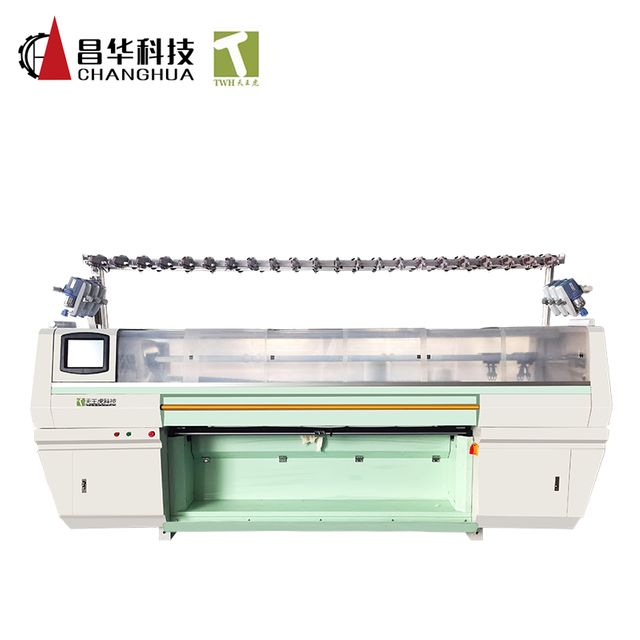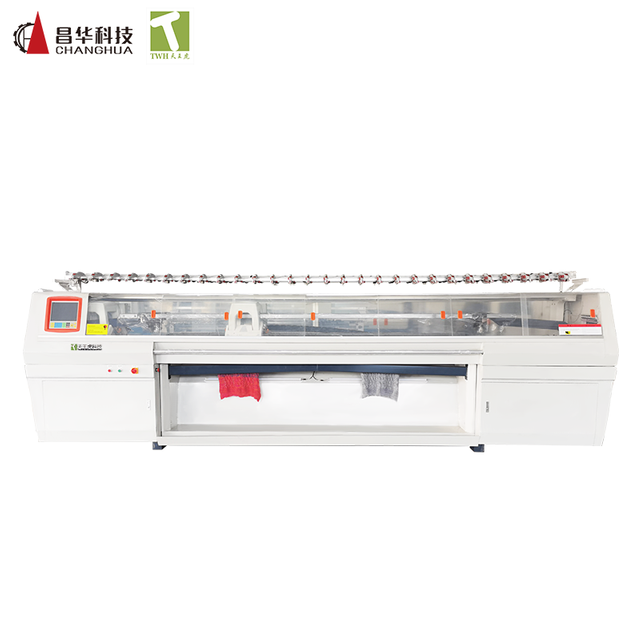Knitting sweaters with a knitting machine can significantly reduce production time compared to hand knitting. The exact time depends on several factors, including the machine type, sweater complexity, yarn choice, and operator skill.
Manual Knitting Machines: 4–8 hours per sweater
Semi-Automatic Machines: 2–4 hours per sweater
Fully Automated Machines: 30 minutes–2 hours per sweater
For mass production, industrial knitting machines can produce hundreds of sweaters per day.
Factors Affecting Sweater Production Time
1. Type of Knitting Machine
Flat Knitting Machines: Best for custom designs, slower than circular machines.
Circular Knitting Machines: Faster, ideal for seamless sweaters.
Computerized Knitting Machines: High-speed, programmable for complex patterns.
2. Sweater Design Complexity
Simple designs (plain knit) are faster.
Intricate patterns (cables, jacquard) take longer.
3. Yarn Type and Thickness
Thicker yarn knits faster but may require fewer stitches.
Fine yarn takes longer but produces lightweight sweaters.
4. Operator Experience
Skilled operators can adjust settings for efficiency.
5. Finishing Processes
Linking seams
Washing & blocking
Adding buttons or embroidery
Recommended Knitting Machines for Faster Production 
For high-quality and efficient sweater production, Changhua knitting machines are a top choice. Known for durability and precision, they offer:
High-speed circular knitting machines for seamless sweaters.
Computerized flat knitting machines for intricate designs.
Energy-efficient models to reduce production costs.
Learn more about Changhua knitting machines
What Is the Process of Knitwear Manufacturing?
Knitwear manufacturing involves multiple stages, from yarn selection to final packaging. Below is a detailed breakdown.
1. Yarn Selection & Preparation
Yarn Sourcing: Wool, cotton, acrylic, or blends.
Yarn Testing: Strength, elasticity, and colorfastness checks.
Winding: Yarn is wound onto cones for machine use.
Pro Tip: High-quality yarn reduces defects in the final product.
2. Knitting Process
a. Setting Up the Knitting Machine
Needle configuration based on sweater size.
Loading yarn onto the machine.
b. Knitting the Fabric
Flat Knitting: Produces panels (front, back, sleeves).
Circular Knitting: Creates seamless tubes (body & sleeves).
c. Quality Control During Knitting
Checking for dropped stitches or tension issues.
3. Cutting & Assembling (If Using Flat Knit Panels)
Panels are cut to shape.
Sewn together using linking machines for a seamless look.
4. Washing & Dyeing (If Needed)
Removes oils and softens the fabric.
Dyeing for desired colors.
5. Finishing Touches
Blocking: Shapes the sweater.
Adding Trims: Buttons, zippers, embroidery.
Final Inspection: Ensures no defects.
6. Packaging & Shipping
Folding, tagging, and boxing for retail.
Watch:How Sweaters Are Made in a Factory
Download: Knitwear Manufacturing Guide (PDF)
Why Choose Changhua Automated Knitting Machines?
Faster production (up to 10x quicker than hand knitting).
Consistent quality (fewer human errors).
Cost-effective for bulk orders.
Best Machines for Sweater Production
| Machine Type | Speed | Best For |
| Flat Knitting | Medium | Custom designs |
| Circular Knitting | Fast | Seamless sweaters |
| Computerized | Very Fast | Complex patterns |
Changhua Knitting Machines offer advanced automation for large-scale production.
Conclusion
Making a sweater with a knitting machine can take anywhere from 30 minutes to 8 hours, depending on the machine type and design complexity. The knitwear manufacturing process involves yarn preparation, knitting, assembly, finishing, and packaging. For businesses looking to scale production, automated knitting machines like those from Changhua provide speed, precision, and cost efficiency.
Want to start your own knitwear production? Please contact us. We look forward to your visit and consultation.
English
العربية
Français
Русский
Español
Português
Deutsch
italiano
日本語
한국어
Nederlands
Tiếng Việt
ไทย
Polski
Türkçe
ភាសាខ្មែរ
Bahasa Melayu
தமிழ்
Filipino
Bahasa Indonesia
magyar
Română
Čeština
қазақ
Српски
हिन्दी
Kiswahili
Slovenščina
Norsk
Svenska
українська
Ελληνικά
Suomi
עברית
اردو
Shqip
বাংলা
Hrvatski
Gaeilge
Māori
සිංහල
नेपाली
Oʻzbekcha
Aymara
Azərbaycan dili
Беларуская мова
Български
guarani
Lietuvių
Runasimi
Türkmençe












